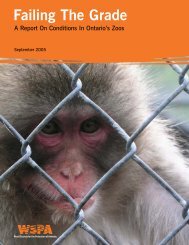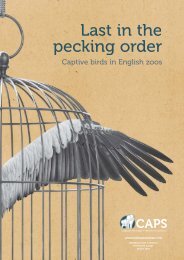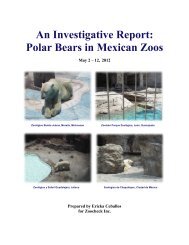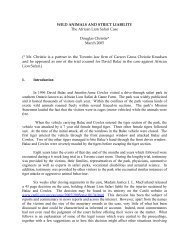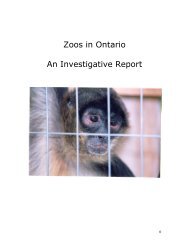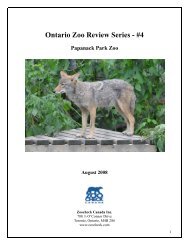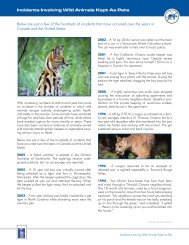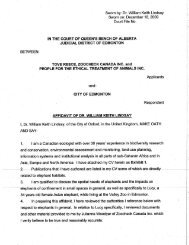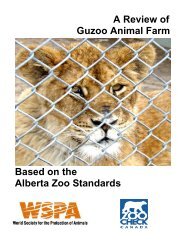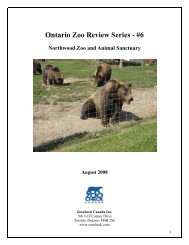STATUS OF BEAR WELFARE
STATUS OF BEAR WELFARE
STATUS OF BEAR WELFARE
You also want an ePaper? Increase the reach of your titles
YUMPU automatically turns print PDFs into web optimized ePapers that Google loves.
Status of Bear Welfare in Cherokee, North Carolina<br />
DEFICIENCY REPORT<br />
OVERVIEW<br />
We find that, in our decades of experience working with captive bears and/or examining zoos<br />
around the world, the enclosures for captive bears at Cherokee’s Chief Saunooke Bear Park<br />
(CSBP), Cherokee Bear Zoo (CBZ), and Santa’s Land (SL) ranked among the worst we have<br />
encountered.<br />
The facilities failed to provide for the basic, essential needs of bears in captivity, including proper<br />
enclosure design, appropriate daily husbandry, seasonal husbandry, environmental enrichment,<br />
and veterinary care. There were no enrichment, dietary, or husbandry changes to mitigate the<br />
inhumane conditions of the concrete pit enclosure design or the undersize cages.<br />
When considering what is spatially appropriate for wild animals in captivity, three questions<br />
should be asked. First, how much space do animals need in order to express natural movement<br />
and behavior Clearly, at the Cherokee zoos, the answer is far more than what has been<br />
provided. Second, how much space do animals need to feel safe and secure Again, the answer<br />
at the three Cherokee facilities is more than has been provided. Third, what are the<br />
consequences of not providing enough space The negative consequences of providing too little<br />
space are clear when one looks at the activity budgets and behavior of the Cherokee zoo bears.<br />
The key problems in all the enclosures were the following:<br />
• simplistic, inappropriate enclosure design<br />
• lack of space<br />
• hard substrates (concrete, hardpan)<br />
• no functional structural enhancements or furnishings<br />
• no tactile, sensory, or cognitive enrichment<br />
• poor use of vertical space<br />
• inadequate shelter<br />
• no privacy opportunities<br />
• intraspecific competition/aggression<br />
• inappropriately positioned visitor viewing stations<br />
• uncontrolled public feeding<br />
In all likelihood, the condition of the bear housings at the three facilities is a result of one or a<br />
combination of the following factors:<br />
• The designer had no knowledge of the biology, behavior, ecology, and lifestyles of bears.<br />
• The present structures are inexpensive to construct.<br />
• They are easy to clean and require little maintenance.<br />
• They provide clear and unobstructed animal viewing at any time.<br />
No effort had been made to utilize the vertical dimension in any of the various enclosures. The<br />
introduction of climbing apparatus, platforms, log piles, branches, and hammocks would greatly<br />
AN INVESTIGATIVE REPORT <strong>OF</strong> CHIEF SAUNOOKE <strong>BEAR</strong> PARK, CHEROKEE <strong>BEAR</strong> ZOO, AND SANTA’S LAND | 15





